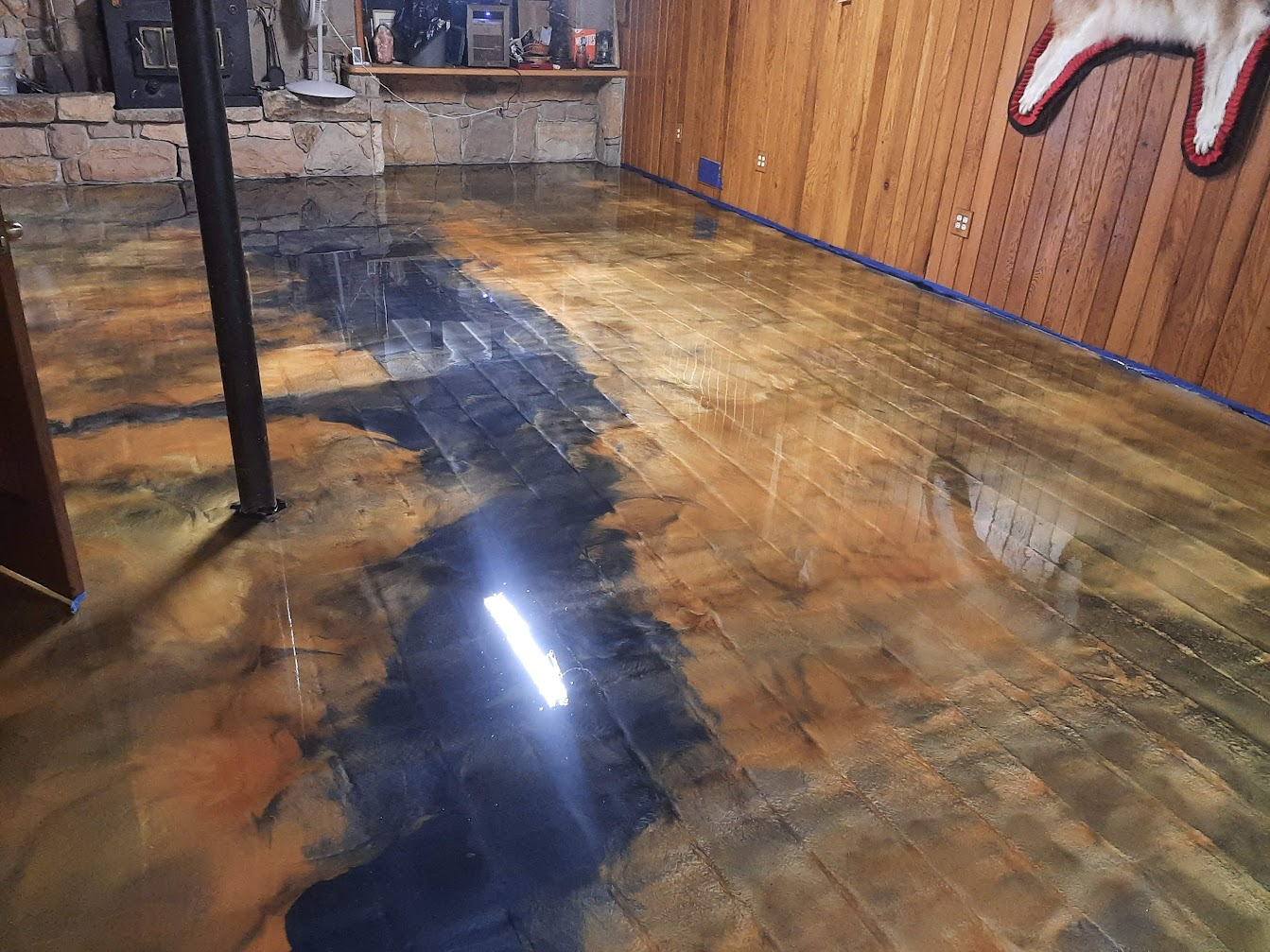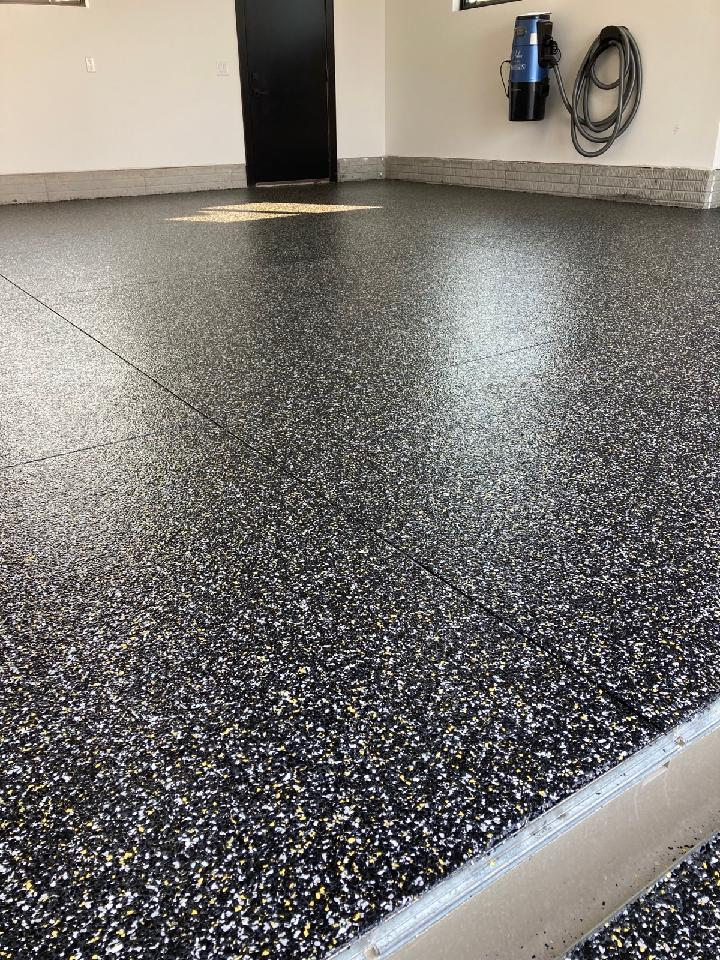When it comes to transforming your basement floor into a functional and inviting space, choosing the right flooring is paramount. Basements often pose unique challenges such as moisture, low light, and temperature variations, making it crucial to select a flooring option that can withstand these conditions while enhancing the aesthetics and comfort of the space. Ensuring that the concrete floor is level, crack-free, and treated for moisture issues before installing any type of flooring is essential. In this guide, we’ll delve into the best basement flooring options available, with a spotlight on polyaspartic flooring as the top contender for basements.
Understanding Basement Flooring Requirements
Before diving into the specifics of various flooring options, let’s outline the key requirements for basement flooring:
- Moisture Resistance: Basements are prone to moisture-related issues such as humidity and occasional flooding. Therefore, the chosen flooring should be highly resistant to moisture to prevent damage and mold growth.
- Durability: Basements often experience heavy foot traffic, especially if they’re used as recreational areas, home gyms, or entertainment spaces. The flooring should be durable enough to withstand frequent use without showing signs of wear and tear.
- Mold and Mildew Resistance: Given the damp environment of basements, it’s essential to choose a flooring material that is resistant to mold and mildew, ensuring a healthy indoor environment.
- Ease of Installation: Basement flooring installation can be challenging due to uneven surfaces or the presence of concrete slabs. Opting for flooring options that can be installed directly over concrete or with minimal preparation saves time and effort.
- Aesthetic Appeal: While functionality is paramount, aesthetics play a significant role in creating an inviting basement space. The chosen flooring should complement the overall design scheme and contribute to a cozy atmosphere.
Polyaspartic Flooring: The Ultimate Basement Flooring Solution
Polyaspartic flooring emerges as the best flooring option for basements, ticking all the boxes for moisture resistance, durability, mold resistance, and ease of installation. Developed as a coating for industrial floors, polyaspartic flooring has gained popularity in residential settings due to its exceptional performance and aesthetic versatility.
Advantages of Polyaspartic Flooring for Basements:
- Moisture Resistance: Polyaspartic flooring is inherently resistant to moisture, making it ideal for basement environments prone to dampness and occasional water intrusion. Its seamless application creates a watertight barrier, preventing moisture-related issues such as warping, mold, and mildew.
- Durability: With its ability to withstand heavy foot traffic and impact, polyaspartic flooring is incredibly durable, ensuring long-term performance even in high-traffic areas such as home gyms or recreation rooms. Unlike traditional flooring options like hardwood or laminate, polyaspartic flooring won’t scratch, dent, or fade over time.
- Mold and Mildew Resistance: Polyaspartic flooring’s non-porous surface makes it resistant to mold, mildew, and bacterial growth, promoting a healthier indoor environment. This feature is particularly crucial in basements where moisture levels can fluctuate, posing a risk of mold proliferation.
- Easy Installation: Unlike traditional flooring options that may require extensive subfloor preparation, polyaspartic flooring can be installed directly over concrete slabs with minimal downtime. Its fast-curing properties allow for quick installation, reducing inconvenience for homeowners.
- Aesthetic Versatility: Polyaspartic flooring comes in a wide range of colors, finishes, and textures, allowing homeowners to customize their basement floors according to their design preferences. Whether you prefer the look of hardwood, ceramic tile, or stone, polyaspartic flooring can mimic the appearance of natural materials while offering superior performance.

Exploring Other Basement Flooring Options
While polyaspartic flooring stands out as the top choice for basement flooring, it’s essential to explore other viable options to find the best fit for your specific needs and preferences. Let’s take a closer look at some alternative basement flooring options:
- Ceramic Tile: Ceramic tile flooring is known for its durability and water resistance, making it a popular choice for basements. However, installation can be labor-intensive, and the grout lines may require regular maintenance to prevent moisture penetration.
- Hardwood Flooring: While hardwood flooring adds warmth and elegance to any space, it’s not the most practical choice for basements due to its susceptibility to moisture damage. Engineered hardwood may offer better moisture resistance but still requires careful maintenance in basement environments.
- Laminate Flooring: Laminate flooring offers the look of hardwood or stone at a more affordable price point. While some laminate options are water-resistant, prolonged exposure to moisture can cause swelling and damage, making it less suitable for basements.
- Vinyl Flooring: Vinyl flooring, including vinyl tile, vinyl plank, and sheet vinyl, is a versatile and cost-effective option for basements. It’s highly resistant to moisture, easy to install, and comes in a wide range of styles and designs to suit any aesthetic preference.
- Porcelain Tile Flooring: Porcelain tile flooring is renowned for its durability and water resistance, making it an excellent choice for basements. It’s available in various colors, patterns, and textures, allowing for creative design possibilities.
- Rubber Flooring: Rubber flooring is an ideal choice for home gyms or exercise areas in the basement. It’s shock-absorbent, easy to clean, and resistant to moisture and mold growth.

Factors to Consider When Choosing Basement Flooring
In addition to the specific characteristics of each flooring option, several factors should influence your decision-making process:
- Usage: Consider how you intend to use the basement space. For example, if it will serve as a home gym or recreational area, you’ll need a flooring material that can withstand heavy equipment or frequent movement.
- Maintenance: Assess the level of maintenance required for each flooring option. While some materials are low-maintenance, others may require regular cleaning, sealing, or refinishing to preserve their appearance and performance.
- Budget: Determine your budget for basement flooring, including installation costs and any additional materials or accessories needed. Keep in mind that while certain options may have a higher upfront cost, they can offer long-term savings through durability and longevity.
- Aesthetic Preferences: Choose a flooring material that complements your overall design vision for the basement. Whether you prefer the classic look of hardwood, the modern appeal of concrete, or the versatility of vinyl, select a flooring option that aligns with your aesthetic preferences.
Conclusion
In conclusion, selecting the best flooring for your basement requires careful consideration of various factors, including moisture resistance, durability, maintenance, and aesthetic appeal. While traditional options like hardwood or ceramic tile may have their merits, polyaspartic flooring emerges as the top contender for basements, offering unparalleled performance and versatility. Its ability to withstand heavy foot traffic, resist moisture and mold, and mimic the look of natural materials makes it an ideal choice for homeowners seeking a durable and attractive basement flooring solution. By weighing the pros and cons of different flooring options and consulting with a licensed general contractor specializing in basement renovations, you can create a functional and inviting basement space that meets your needs and exceeds your expectations.
